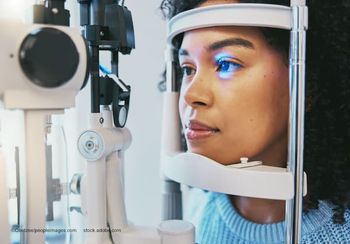
Age-related macular degeneration and diabetic retinopathy phase III trials show promise
Drug development for retinal disease is particularly challenging because traditional routes of drug delivery often are unable to achieve desired therapeutic levels, and the disease process often involves multiple complex pathways. An unmet medical need still exists-particularly for the two most prevalent diseases, age-related macular degeneration and diabetic retinopathy-but several phase III trials show promise.
Key Points
Dug development for retinal disease is particularly challenging because traditional routes of drug delivery often are unable to achieve desired therapeutic levels, and the disease process often involves multiple complex pathways. Despite the dramatic progress achieved during the past several years, an unmet medical need still exists, particularly for the two most prevalent diseases: age-related macular degeneration (AMD) and diabetic retinopathy (DR).
AMD and DR affect more than 12 million people in the United States and will affect about 20 million by 2020 due to the increasing prevalence of type 2 diabetes and the aging of the population.1,2 This article will provide an overview of recent progress in retinal drug development, with an emphasis on recently completed phase III AMD and DR clinical trials.
AMD is the leading cause of blindness in the developed world, and its prevalence is expected to increase 50% by 2020.1 The neovascular, or "wet," form of AMD is much less prevalent but is responsible for ~90% of the severe vision loss associated with AMD.3 The most promising results to date have come from drugs that inhibit the activity of vascular endothelial growth factor (VEGF), a critical pro-angiogenic signaling molecule.4
Concluded AMD studies
Three recently concluded phase III studies have confirmed the safety and efficacy of ranibizumab for subfoveal choroidal neovascularization in wet AMD. These studies also tested whether a less-frequent treatment schedule (either quarterly or "as-needed" injections of ranibizumab) was sufficient for maintenance of improved vision.
In the SUSTAIN trial, 531 patients who were either ranibizumab-naïve or previously treated with ranibizumab or PDT received three monthly injections of ranibizumab followed by additional injections "as needed."6 Preliminary analysis of the data from 69 ranibizumab-naïve patients showed a mean seven-letter increase in visual acuity (VA) and a mean decrease in central retinal thickness after 1 year. After the first three monthly injections, eyes received an average of 2.3 "as-needed" maintenance injections, suggesting that monthly injections may not be required for maintenance of improved vision.
The EXCITE trial also addressed this question; 354 patients were randomly assigned to receive monthly ranibizumab injections for 1 year or monthly injections for 3 months followed by three quarterly injections. Patients receiving quarterly injections were randomly assigned to receive one of two different doses. Although patients in all three study arms had increased VA after 1 year, those who received monthly injections had more improved VA (mean 8.3 letters) than those who received quarterly injections of either dose (mean 4.9 and 3.8 letters).
Another phase III study was conducted to compare combination therapy with ranibizumab and PDT versus ranibizumab alone.7 Forty patients were randomly assigned 1:1 to receive PDT and ranibizumab (injections in each of the first 3 months followed by additional injections as needed) or sham PDT and ranibizumab. Although no statistically significant differences between treatment groups were observed, the ranibizumab monotherapy group had a greater mean increase in VA than the combination therapy group. Although less effective at improving VA, combination therapy tended to be more effective at reducing lesion activity at 6 months, suggesting that combination therapy may require fewer maintenance injections.
Results from these studies have solidified the position of ranibizumab as the most effective treatment currently approved for wet AMD. Although reduced frequency of administration remains a possibility, improvement is best achieved with monthly injections, which probably will remain the standard of care for the near future.
One other therapy recently has entered clinical use for wet AMD: bevacizumab (Avastin, Genentech), a humanized version of the same monoclonal antibody from which ranibizumab was derived, was approved in February 2004 for colorectal cancer.5 Although bevacizumab was not developed and approved for ophthalmic indications, off-label use is widespread mainly because its ophthalmic formulation is 20-fold less expensive than ranibizumab.
Newsletter
Don’t miss out—get Ophthalmology Times updates on the latest clinical advancements and expert interviews, straight to your inbox.


















































.png)


